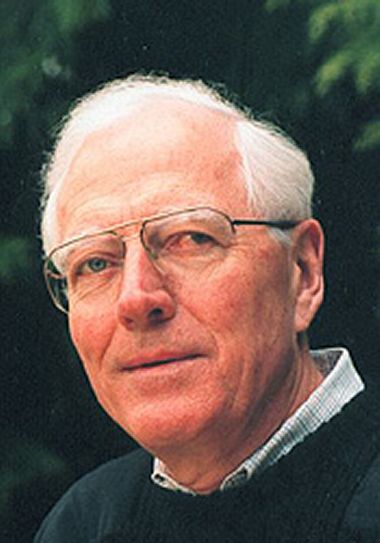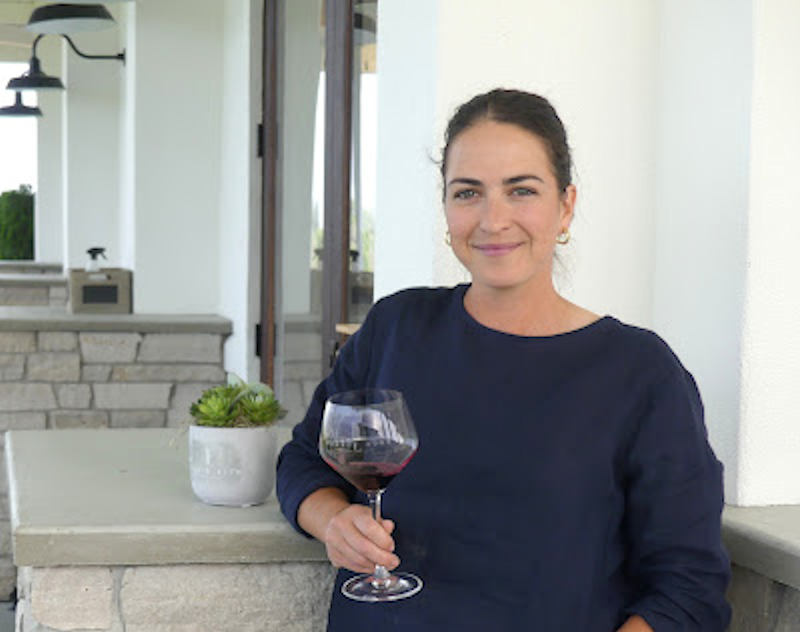
John Schreiner
John Schreiner
We are honoured that Mr Schreiner, a fine gentleman and true supporter of Canada's wines, allows use to use his articles.
By John Schreiner
reprinted with permission
Brianna Toor -photo credi John Schreiner
Component winemaking at French Door
The winery opened in 2020 after owners Audra and Jason Shull acquired the vineyard and the buildings of Montakarn Estate Winery on Black Sage Road. They renovated the former winery, adding top flight winemaking equipment that Pascal needed to make both big red wines and whites packed with flavour. The French Door name reflects at insight the Shulls once had while visiting wineries in Provence. “Why are we even here?” Jason said to his family. “We have Provence in our back yard.” That led them to think of their winery on Black Sage Road as their door on French wine country. “The lavenders, the lake, the orchards, the vineyards … it is identical,” Jason says.
Bree Toor, the associate winemaker at French Door Estate Winery near Oliver, describes herself as a “component winemaker.” “It is like cooking,” she says. “You have a full spice rack with options.”
Her approach is usually laid out in the technical descriptions of how she puts wines together. Typical is her note on the vinification of a blended white wine called Lys, made with 71% Viognier, 21% Riesling and 8% Sémillon. “When creating this blend,” the note reads, “each varietal was handled with care. The Viognier was split into three separate ferments to build complexity. The grapes were placed into two stainless steel tanks and four neutral French oak barrels. The Viognier was then fermented at 19◦ Celsius to develop pear notes and to ensure a longer ferment. The barrels were stirred twice a week during fermentation. Simultaneously, the Sémillon was pressed directly into neutral French oak barrels with no stirring, while the Riesling was put into stainless steel tanks at 18◦ Celsius to maintain all of the grape’s phenolics. Once each wine was fermented separately, they were blended … in stainless steel tanks, and the wine was aged on lees until bottling.” That seems like a lot of work for a product the winery sells for $26 a bottle. But since all of French Door’s wines involve comparable detailed winemaking, Bree Toor seems to have been given a mandate from winery owner Jason Shull to make the best wines she can and let him worry about the economics.While some of French Door’s wines are aggressively priced, they always deliver good quality. The winery opened in 2020 with Pascal Madevon, the legendary winemaking consultant in the Okanagan, making the initial wines before Bree was recruited to be the hands-on winemaker. Initially, winemaking was not her chosen career. Raised on an Alberta ranch, she went to Europe after high school to travel, financing her travels by working in bars and in vineyards in Italy. Returning to Canada, she earned a political science degree from the University of Victoria. She worked in finance for a while before decided she really wanted a career in wine, initially as a sommelier. She has taken the Wine & Spirits Education Trust courses, chemistry courses and then the on-line enology courses from the University of California at Davis. She also did a harvest in Australia’s McLaren Vale with Peter Fraser at Yangarra Estate Vineyard.
On returning to Canada, she spent several years at Blue Grouse Vineyards, mentoring in the vineyard and the winery with Blue Grouse winemaker Bailey Williamson before moving to take on the winemaking challenge at French Door. “It is tough coming in as the winemaker when the portfolio is set up,” she says. “It was tough for me to make a wine [Merlot] to sell for over $70. I had to make sure I was doing what I could in order to deliver a product close to that market value.” I would suggest she is delivering. Here are notes on the wines.
French Door Sauvignon Blanc 2022 ($34). This is another example of component winemaking. The grapes for this wine were picked twice: an early pick to lock in bright acidity and a later pick to lock in rich flavours. The juice was pressed into both neutral French oak barrels and stainless-steel barrels. Two barrels were fermented with natural yeast while the rest were inoculated with cultured yeast. Malolactic fermentation was allowed in the oak barrels but not in the steel barrels. The wine aged five or six months before being bottled. The result is a complex wine with herbs, lime and tropical fruits in the aromas and on the palate. 91.
French Door Chardonnay 2021 ($40). This is an elegant wine, with butter and vanilla aromas mingled with flavours of nectarine, melon, and apple. The oak – the wine was aged both in oak and on the lees in stainless steel – is well integrated. 92
French Door Fleur 2022 ($34). The blend is 74% Gamay, 16% Pinot Noir and 10% saignée juice from Gamay. Think of this as a Beaujolais Nouveau with added complexity gained from Bree’s component winemaking. She has two lots of Gamay – one from a vineyard in East Kelowna and one from a vineyard in Osoyoos. The process involves some whole whole-cluster fermentation with six days of full carbonic maceration before yeast inoculation. This a light-bodied red with aromas of cranberry and cherry. On the palate, there is a medley of flavours: cherry and raspberry with an earthy note on the finish. 91
French Door Cabernet Franc 2021< ($60 for 25 cases). The winery employed whole-berry fermentation with this wine, which was then aged 14 months in barrel. The wine begins with a complex and appealing medley of aromas: black cherry, blackberry, leather, spice and chocolate. The intense flavours display notes of spicy, dark berries with hints of leather and chocolate. 93.
French Door Héritage 2020 ($54). The blend is 41% Merlot, 28% Cabernet Franc, 13% Cabernet Sauvignon, 7% Syrah, 6% Malbec and 5% Petit Verdot. The wine was aged 14 months in French oak. Dark in colour, the wine begins with aromas of black cherry and black currant. It is rich in texture, with flavours of black cherry and black currants mingled with chocolates. The long, ripe tannins give the wine a lingering finish. There is enough grip to suggest the wine will cellar well. 94.
John Schreiner Articles
Home | Sitemap | Advertise |Okanagan| Contact | Naramata || Robert's Selection | Wine Terms ©2023

